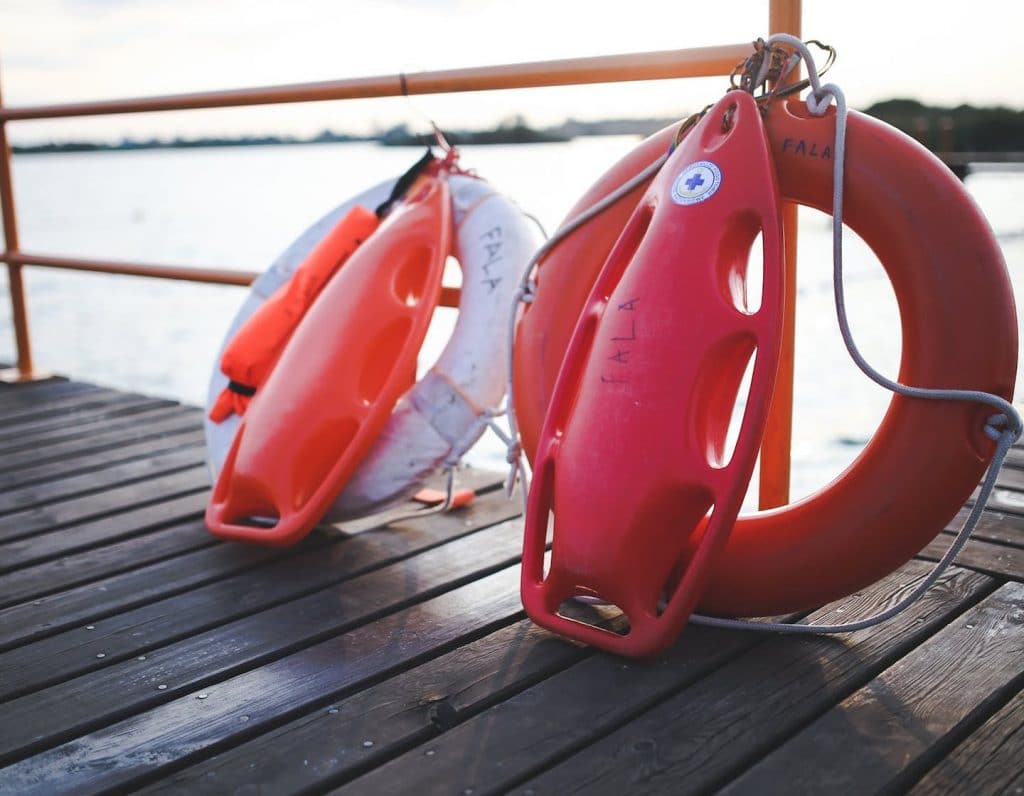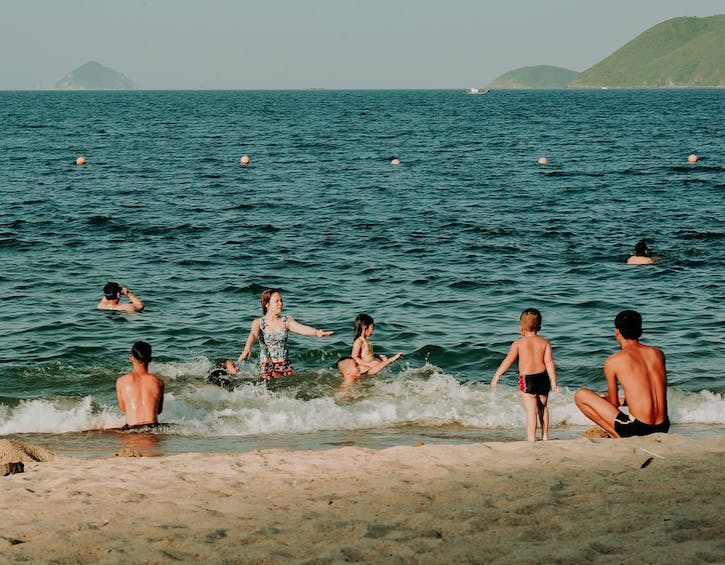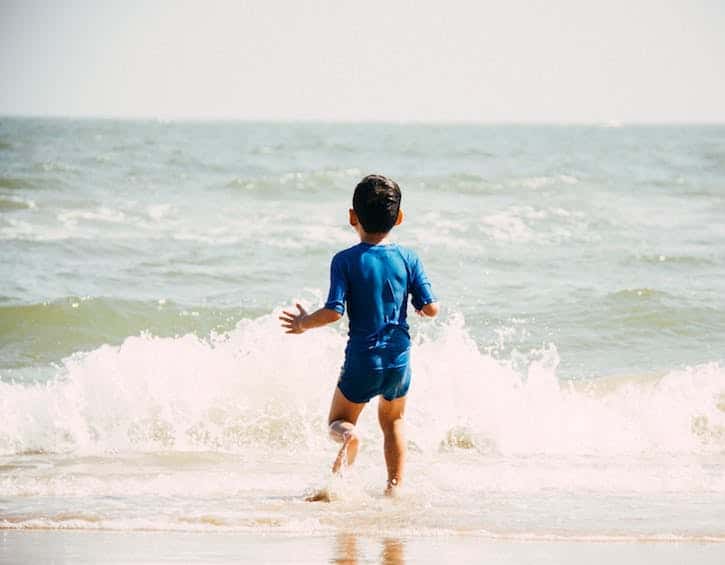
Signs of drowning to look out for at the beach or pool
The summer break calls for kicking back and relaxing, cooling down at the pool, taking a dip in the sea and spending some quality time with the kids on the beach. Now, we’re not looking to scare you, or stop anyone’s fun, but knowing the basics of drowning – what to look out for and the different types (yes, there are multiple forms of drowning) are important, especially during the summer with extra trips to the pool and the beach to cool off. One of the scary things to note is that drowning doesn’t always look like drowning and can be easy to miss, even with lots of people around, so we wanted to point out what you should be looking out for while the kids are splashing about.
We think this video is a good example of how drowning can happen even in crowded spaces, without anyone realising. The footage may be distressing to some, so we have not included it here. Follow this link to watch.
Editor’s note: This is cautionary advice on how to keep your child safe in the water. Please check with a medical professional any time you feel your child may be in danger. If your child has had an incident in the water, please use discretion and call for help. If there is not a lifeguard on duty where you are swimming and you don’t feel comfortable going in, don’t.

What should you look out for?
It goes without saying that whenever your kids are playing in water, parents need to be extra vigilant. Even if there are lifeguards on hand or you’re feeling safe in the shallows, we need to be eagle-eyed. If for whatever reason, your attention has been pulled away from your children, you should start to worry if you don’t hear much noise. The first sign of trouble is usually a lack of noise, and this is why drowning can be missed.
When you are struggling to breathe at the surface of the water, you typically have less than a minute before you submerge. Physiologically, the respiratory system focuses on breathing, speech is secondary. So when you’re drowning, you lose lung capacity and the instinct to call for help. On top of that, drowning individual’s mouths are not at the surface long enough to inhale and exhale fully, let alone call for help.
When we think of drowning, and what Hollywood shows us in dramatic rescue scenes, we think of panicked flailing, kicking and shouting but in reality individuals in trouble stay in an upright position, and are unable to support themselves through kicking and cannot voluntarily control their arm movements throughout the Instinctive Drowning Response.
Signs of drowning:
- Unable to talk, respond or ask for help.
- Head bobbing above and below the waterline.
- Unfocussed vision.
- Head tilted back.
- Vertical body trying to swim in a certain direction but making no headway.
Alternatively, someone who calls for help, flailing their arms and legs is in fact, in “aquatic distress” and not technically drowning; they can identify that they are in trouble and are able to ask for help.
If someone else is chaperoning your child, don’t feel guilty about reminding them that undistracted supervision is vital – it can’t be stressed enough. Now we have established what signs to look out for, let’s look at the different types of drowning that you may not know about. Paranoia comes naturally to parents and these submersion injuries (the medical term) may not be the most common occurrences, but it is always best to be mindful of the signs and symptoms.
Dry Drowning
When someone takes in a small amount of water through the nose and or mouth, it causes the airway to seal. When they try to breathe, the body’s reflex is stimulated that closes the larynx and epiglottis, diverting water to the stomach. About 10% of drownings are actually dry drownings so it still requires careful attention.
Dry drowning occurs immediately after exiting the water. Irrespective of the child’s age, look out for these warning signs:
- If your child has been pulled or rescued from the pool, get him/her checked by a paediatrician.
- Persistent coughing and rapid shallow breathing, nostrils flaring – needs to work harder than normal.
- Drowsiness, forgetful or behavioural change.
- Nausea or vomiting occurs due to inflammation or lack of oxygen.
Read more: Swim Safety: Everything You Need To Know About Dry Drowning
Secondary Drowning
This occurs when a small amount of water gets into the lungs causing inflammation that in turn inhibits the body’s ability to convert oxygen to carbon dioxide and vice versa. Unlike dry drowning, there is a delay of up to 24 hours until distress signs begin to show (the symptoms are the same as in dry drowning). Keep a close eye on your child and seek medical advice if you are at all concerned.

Saltwater Drowning
Drowning in the ocean or sea can lead to saltwater drowning. As opposed to freshwater, saltwater draws water from the blood into the lungs. This increases the viscosity of the blood, making circulation sluggish and lowering the heart rate. Cardiac arrest may occur up to 12 minutes after rescue.
Submersion injuries cause breathing trouble and can possibly turn fatal if unnoticed. The key is getting oxygen pumping in the lungs as soon as possible. In adverse circumstances, if you notice any of these symptoms, or any unusual behaviour, in your child (low heart rate and shallow breathing), or if your child had to be rescued, call the doctor right away. He or she will talk you through how to care for your child, advise severity and course of action.
Freshwater Drowning
When freshwater enters the lungs (rivers, lakes, swimming pools), it can hamper the body’s respiration system. The body absorbs the water into the blood, resulting in distortion of the pH value of the blood.
Our bodies are designed to cope with minor changes. Larger changes like this may lead to cardiac arrest. This can happen within two to four minutes of rescue. Watch your child carefully and call for help if there is any incident in the water.
Stay Safe
You can have a relatively stress-free time in the water by practicing some ground (water?) rules. Make sure that you and your kids are prepared before swimming and gauge whether the environment is beyond your or your child’s swimming ability. Practice water safety measures and maintain constant vigil and supervision while swimming and after. If your child has been rescued from the water, pay close attention for any signs of troubled breathing and be sure to check in with a doctor regardless. Stay safe and happy swimming!
 View All
View All











 View All
View All





 View All
View All


 View All
View All










